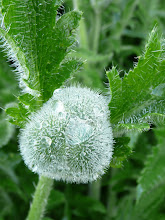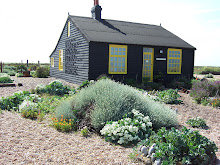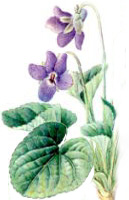skip to main |
skip to sidebar
 my photosBERBERISBerberis thunbergii atropurpurea loses its leaves in winter but looks amazing at this time of year with its coat of attractive purple/green leaves and delicate yellow umbels.A year or so back we gave this shrub a severe prune, but has returned to reign supreme!
my photosBERBERISBerberis thunbergii atropurpurea loses its leaves in winter but looks amazing at this time of year with its coat of attractive purple/green leaves and delicate yellow umbels.A year or so back we gave this shrub a severe prune, but has returned to reign supreme!
 This prickly shrub provides berries for birds through autumn to winter and makes great ground cover and a safe nesting site too. Bees will be attracted to the flowers. A good value for money shrub which will provide interest in the garden all year round. Does need a prune once in a while to keep at a desired height and a good shape.u
This prickly shrub provides berries for birds through autumn to winter and makes great ground cover and a safe nesting site too. Bees will be attracted to the flowers. A good value for money shrub which will provide interest in the garden all year round. Does need a prune once in a while to keep at a desired height and a good shape.u
 - eryngium seedheads
- eryngium seedheads
 my photosLEMONS AND LIMESA lemon shade potentilla at the front of a border. A hardy perennial which is long flowering and will self seed around the garden.
my photosLEMONS AND LIMESA lemon shade potentilla at the front of a border. A hardy perennial which is long flowering and will self seed around the garden.
 A lime shade euphorbia, in the middle of a border. A compact, suckering variety which can be useful as ground cover. Will tolerate dry shade and looks great in a woodland setting.Always be cautious when handling euphorbia, the sap is poisonous and irritates the skin.
A lime shade euphorbia, in the middle of a border. A compact, suckering variety which can be useful as ground cover. Will tolerate dry shade and looks great in a woodland setting.Always be cautious when handling euphorbia, the sap is poisonous and irritates the skin.
 my photosYELLOW DEADNETTLE AND BUMBLEBEENot as it may seem, the deadnettle is not related to the nettle family, but is a member of the mint family, hence it invasiveness in the borders. Even so I have found it fairly easy to pull out in areas where it is not wanted.With its yellow-flowered angular stems and hairy non-stinging leaves, it looks lovely blending in with the fresh greens to be found in the garden at this time of year.
my photosYELLOW DEADNETTLE AND BUMBLEBEENot as it may seem, the deadnettle is not related to the nettle family, but is a member of the mint family, hence it invasiveness in the borders. Even so I have found it fairly easy to pull out in areas where it is not wanted.With its yellow-flowered angular stems and hairy non-stinging leaves, it looks lovely blending in with the fresh greens to be found in the garden at this time of year.  Many bees, bumblebees and moths are attracted to the flowers which contain nectar and pollen. I did spot a red-tailed bumble bee with its head in a flower too.If you want to help the survival of the bee species, add it to your garden and you will discover why this plant is sometimes called Bee Nettle, a fitting name.
Many bees, bumblebees and moths are attracted to the flowers which contain nectar and pollen. I did spot a red-tailed bumble bee with its head in a flower too.If you want to help the survival of the bee species, add it to your garden and you will discover why this plant is sometimes called Bee Nettle, a fitting name.
 my photoIN THE GARDENI captured this beautiful comma basking in the sunshine today.I had a day off work and spent most of the day in the garden, which was a real tonic.By having this time to myself, has inspired me to start a new blog - a west sussex garden diary - where I shall record, in words, my sightings of flora and fauna in the garden.
my photoIN THE GARDENI captured this beautiful comma basking in the sunshine today.I had a day off work and spent most of the day in the garden, which was a real tonic.By having this time to myself, has inspired me to start a new blog - a west sussex garden diary - where I shall record, in words, my sightings of flora and fauna in the garden.
 photo - rspb websiteSOWING SEED & A SWALLOWI may have to sacrifice growing my own plants from seed this year. I had so many plans, but just haven't had nearly enough time to commit to the garden. I have yet to sow a single seed!I had word from my Dad the other day. He has seen the first swallow of the summer, so this is the time he starts getting his seeds on the go.Do you follow a set pattern for seed sowing?Have you seen your first swallow of the summer?
photo - rspb websiteSOWING SEED & A SWALLOWI may have to sacrifice growing my own plants from seed this year. I had so many plans, but just haven't had nearly enough time to commit to the garden. I have yet to sow a single seed!I had word from my Dad the other day. He has seen the first swallow of the summer, so this is the time he starts getting his seeds on the go.Do you follow a set pattern for seed sowing?Have you seen your first swallow of the summer?
 my photo
my photo
SPARE A THOUGHT FOR WILDLIFE
Back in January, Anna from Half An Acre invited me to write a short article to appear in the current edition of UK Handmade, a downloadable quarterly magazine. The content to be appropriate for the Spring season, tied in with the decline of insects and birdlife in UK gardens and how we might help.'Spare a thought for wildlife and make space for nature in your garden. A large area isn’t essential, as in just a metre square a small wildlife sanctuary can be created.
Just by providing a feeding station and birdbath, or planting a tree or shrub will supply garden birds with food and water, nesting area and a safe haven free from predators, such as the neighbour’s cat!
A woodpile in a quiet area will attract beetles and many other insects, who will explore the nooks and crannies that appear once the wood starts to decompose. Frogs, toads and hedgehogs will discover the warm, dry space underneath, to hibernate until warmer weather arrives.
Encourage a small patch of stinging nettles, maybe a weed to us, but a great food source for ladybirds and butterflies. The latter will lay eggs on the leaves, which in turn provides food for any lodging hedgehog.
An old branch left amongst ivy makes a great perch for wrens, who love to bustle through the leaves looking for insects, and robins will use it too. Ivy produces berries, which one-by-one will be picked off by a hungry blackbird or thrush.
It’s easy, and by going wild, you too can help conserve the wonderful wildlife we have around us.'
An edited version of the above appears in the magazine on Page 30.
I have often wondered how I'd feel to have my own column. Thanks to Anna, now I kind of know! See also Diana at Pebbledash for a delicious nettle soup recipe. A great way to encourage humans into your home!


























































































